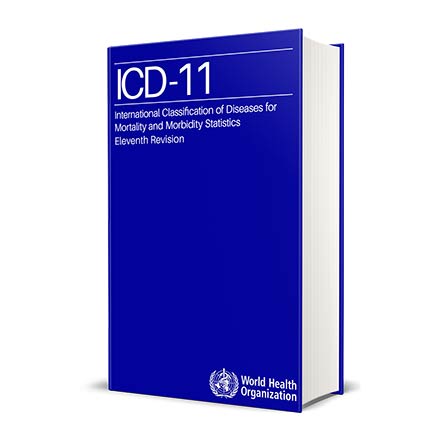
Overall, many improvements for eating disorders diagnosis, and a few suggestions as well.
After more than 25 years, the 11th International Classification of Diseases and Related Health Problems, or the ICD-11, was updated and released by the World Health Organization, or WHO, last June. It is planned to go into global effect January 1, 2022. The newest revision will change many codes and definitions of disease, and will be particularly better adapted to work with today’s digital platforms. The field of eating disorders will be affected, too, for example, with the inclusion of binge eating disorder (BED) and avoidant-restrictive food intake disorder (ARFID).
A working group of clinicians from the Federal University of Sao Paolo, Brazil, and Columbia University, New York City, recently compared guidelines of the proposed ICD-11 guidelines for several eating disorders with the ICD-10(BMC Medicine. 2019; 17:93). The vignette-based, case-control study was done over the Internet with a global multilingual and multidisciplinary sample of 2288 mental health professionals registered with WHO’s Global Clinical Practice Network. The researchers posed eight research questions concerning the addition of ARFID in the ICD-11, clarification of the diagnosis of AN, subjective binge eating, and distinguishing BN from BED regardless of patient weight. Because BED and ARFID are new diagnoses in the ICD-11, the authors allowed study participants to state that the diagnosis was atypical or other specified or unspecified, which would not exactly fit the new case descriptions of BED and ARFID but would be the best diagnoses available.
Improved diagnostic accuracy was found in the ICD-11
Dr. Angélica M. Claudino and her team found improved diagnostic accuracy for all feeding and eating disorders in the ICD-11, and the new diagnosis of binge eating disorder improved diagnosis and reduced the use of “atypical,” “other unspecified,” or “unspecified,” which had limited use or informational value, according to the authors.
The participants were very accurate when diagnosing AN using both the ICD-11 and ICD-10guidelines (96.6% and 93.7%, respectively). Clinicians who used the ICD-11 criteria guidelines were able to successfully differentiate cases of ARFID from cases of AN (89.9% vs 80.4%, respectively) and 88.5% of clinicians were able to differentiate ARFID from no diagnosis. Most clinicians correctly differentiated cases of BN from BED.
As for the clinical utility of the diagnostic guidelines of the ICD-10 and ICD-11, the ICD-11 was rated more favorably for each diagnosis in terms of how easy to diagnostic categories were to use, how well the guidelines fitted the case vignette, and how clear the guidelines were. At the same time, the study results also underscored several areas in which the initially proposed guidelines need improvement.
Suggestions for improvement
The working group made several suggestions. First, defining AN recovery remains problematic. The authors suggested that the diagnosis of AN be continued until an individual reaches a healthy weight and has stopped behaviors aimed at losing weight without the support of ongoing treatment. (It is worth noting that the best cutoff for duration of recovery needed for such a determination has not been empirically established.)
The definition of recovery in AN was refined in the final guidelines by adding additional qualifiers related to a patient’s underweight status. The researchers propose that individuals recovering from AN who have reached a healthy body weight should still be considered to have AN until a full and lasting recovery is achieved. “Full and lasting recovery” included maintaining a healthy weight and stopping behaviors aimed at reducing body weight for at least a year after intensive treatment is discontinued.
As for patients with BN, the study results indicated that further guidance is needed with the inclusion of subjective and objective binge eating when giving a diagnosis of BN. They recommend that in the “Additional Features” sections for both BN and BED, since binge eating episodes may be “objective,” or “subjective,” the core feature of a binge-eating episode is the experience of loss of control, rather than the size of the binge.
A third finding was that clinicians tend to associate BED with obesity, perhaps partially because most individuals who seek treatment for BED are overweight. The ICD-11clinical description of BED states that weight is not a determining factor feature of this disorder. Thus, obesity, although a consequence of BED, should be recorded separately.
Overall, according to the authors, the new ICD-11diagnostic guidelines for eating disorders are a significant improvement over those listed in the ICD-10.They added that the new categories of BED and ARFID “have the potential to facilitate the organization and delivery of services and to achieve better clinical outcomes over time.”

